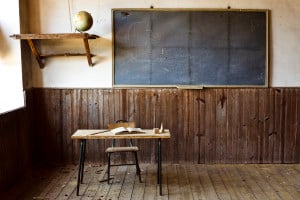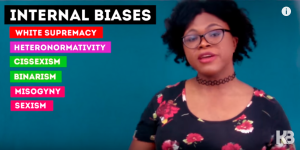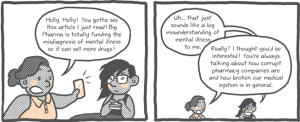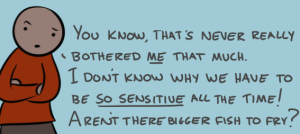As we come fully into fall and social media timelines fill with photos of kids shining with scholastic achievement (mine being one of them – star speller, woohoo!), I’ve been reflecting on one photo in particular.
A friend posted a picture she took while at the Carlisle Indian Industrial School in Pennsylvania earlier this year. It shows the headstones of a Piute child named Boise and a Shawnee child named Fanny.
It’s a sobering and triggering photo.
Carlisle was the first off-reservation Indian boarding school. For many Natives, it represents the destructive and often deadly nature of official US assimilation policies forced down the throats of Native youth and families from the late 1800s to the mid-1900s.
Note: I use the term “Indian” sparingly and only when referring to the legal and historical name thrust upon Indigenous people of the US by the federal government. “American Indian” is the legal term used today. Whenever possible, I use Native, Indigenous, or specific tribal names.
I’ve heard harrowing first-person accounts of children having lye spread in and around their mouths for speaking prohibited Native languages. Kids as young as five and six were bathed in kerosene and forced to cut their sacred hair upon arrival.
Physical and sexual abuse was widespread. Trying not to die was as much a part of the curriculum as learning a new trade.
Boarding schools were Guantánamo for Native babies.
And it was considered totally legit in the name of mainstreaming. Carlisle – and the dozens of other schools modeled after it – ruled by the motto: “Kill the Indian, save the man.”
As someone who has worked extensively with Native youth and families in both the public education and social services systems, and as someone whose immediate family were sent to Indian boarding schools, I can say unequivocally that the effects of what’s known as the Indian boarding school era are still felt – in immense and powerful ways – today in both the US and Canada.
And yet many refuse to lay blame at the feet of these institutions. Boarding schools weren’t that bad, they say. They point to the Natives who got good jobs, or flourished athletically, like Jim Thorpe, and especially those who refused to return to their Native homelands in favor of the Western lifestyle.
More still know nothing of the atrocities experienced by boarding school survivors and dismiss studies that show intergenerational trauma affects Native students in classrooms today.
I’ve heard these phrases and more too many times to count: “They’re just lazy,” teachers tell each other in the lounge discussing failing students. “Their parents don’t even care,” they surmise after another missed parent-teacher conference. “Pull yourself up by your bootstraps” or “Work harder like your peers,” they tell the kids who don’t turn in homework.
Educators need to remember context before passing judgment.
It’s therefore my hope the following serves as a sort of history lesson to explain the links between the Indian boarding school era and Native educational outcomes today.
The Humane Way to Assimilate
Let’s assume good intentions established Indian boarding schools during the late 1800s. Using a broad lens, the concept of boarding schools doesn’t look so bad.
Many historians say these schools were a way to save what many saw as a dying race.
The reservation system was failing, Natives were living in extreme poverty, and conflicts continued to plague US military forces on the Great Plains (and, uh, massacres continued to plague Native tribes).
Assimilating Native youth seemed to be the only way to save Native people. If Native youth learned how successful they could be learning English and Western culture, everyone’s problems would be solved.
At first, churches and missionaries set up schools outside reservation borders and kids would attend during the day and return home in the afternoon. But Native kids still learned from family and cultural systems on the reservation, still spoke their Native languages, and were generally still “Indian.”
Army officer Richard H. Pratt came on the scene in 1879, fresh from an experiment working with Native prisoners, to whom he taught English and Christianity and trades for employment.
Not so surprisingly, the inmates overwhelmingly chose conversion and assimilation to longer imprisonment, so Pratt saw his experiment as a success and published “then and now” photos showing the prisoners first as “savages” (long hair and leather clad) and then as “civilized” (cut hair, pressed shirts, and polished shoes).
Pratt and his supporters were certain the prisoner experiment would work for Native children. What could go wrong?
Pratt convinced the families of about 80 children from the Pine Ridge and Rosebud reservations in South Dakota to let him educate their kids 1,500 miles away in Carlisle, Pennsylvania. The long distance, he argued, would break the hold tribal life had on students.
Pratt’s school was styled on military regimen; drills and industrial work were built into a school day that lasted from 5:45 a.m. through 9 p.m. Tribal languages and practices were not allowed. Pratt’s the guy who coined the “kill the Indian” phrase mentioned above.
In 1893, mandatory education for Native children became federal policy. If parents refused to send their children away, Bureau of Indian Affairs authorities could withhold treaty-obligated annuities or rations (food, clothing, land) and jail offenders.
Hundreds of Indian boarding schools, both on-site and off-reservation, were built and utilized through the early part of the twentieth century. Tens of thousands of Native children were forced through the system.
By the 1920s, however, the boarding school trend lost favor, primarily because of how expensive it was (annual appropriations reached into the millions) and how few Native students chose to assimilate into white society upon graduating. The feds turned over many school administrations to religious organizations.
It would be another half-century, in the 1970s, that the Indian boarding school era would fade out its mission to “civilize” Natives.
Today, many boarding schools continue to operate specifically to education Native children, but under tribal authority and oversight and with positive, education-based missions that incorporate Indigenous teachings and perspectives.
Fear and Punishment as Educational Tools
Though I find it problematic at best, many consider the foundations and intentions of Indian boarding schools to have been beneficial and successful – if the aim was to save a dying race, then the 5.2 million of us alive today can thank Indian boarding schools for a job well done.
It is my belief, however, that government and church-run boarding schools have had the single greatest negative impact on Natives, beyond wars or reservations or anything else the US threw our way.
Not only did the forced removal of Native children result in the destruction of the tight familial structures and cultural values many tribes relied on, it also brought tribes to their knees politically and ended Native-led resistance efforts.
What better way to establish dominance and ensure submission than to take away that which is most precious to the people you’re trying to conquer?
The schools weren’t developed to educate, but to “civilize” by whatever means necessary.
Interviews and accounts from school administrators in a document known as the Kennedy Report (1969) show how they believed brutal punishments for transgressions like speaking Native languages were necessary to (literally) break children from tribal values.
My mom and other relatives went to Indian boarding schools, and I’ve listened to and researched first-person accounts of the abuse and destruction children endured.
One gentleman I interviewed told how he was five years old and didn’t want his hair cut, as was mandatory for boys arriving at school. One clergyman told him to get in line with the girls if he wanted his hair kept long. Staff gave him a pink rosary, instead of the blue reserved for boys.
He didn’t think anything of it – gender roles weren’t so rigid for Lakota people as they were for Westerners – until the teachers and older students began to mock him and laugh at his long hair and pink rosary.
Though shamed, he still refused to have his hair cut. He was beaten and blacked out; when he awoke, his hair, considered sacred by the Lakota, was gone.
I also interviewed a woman who said she watched as a girl in her dorm slowly died from a common cold because the staff didn’t want to waste medicine on a child they thought was faking illness, and she was made to run extra laps in the morning.
The woman said she and the other girls piled blankets on the sick child and pushed her bed up by the heater at night, but she was dead within the week and buried in the back of the school.
I’ve heard countless stories of physical, emotional, and sexual violence.
This isn’t education. It’s torture.
The Impact on Native Student Outcomes Today
Earlier this year, a report from the American Academy of Pediatrics used science to prove what Natives have known for a long, long time: Trauma affects DNA.
To put it another way, intergenerational stress and historical trauma are real and impact children in real ways.
Generations of kids forced into boarding schools meant generations of parents without children to raise. The system succeeded in dismantling traditional family and cultural structures and values.
When it comes to boarding schools, the trauma is passed down in obvious ways:
- There are many in my generation and younger who were never taught our tribal languages. Why would our elders teach us something that could get us beaten or worse, as they were?
- Boarding schools taught many parents and grandparents raising children today to be distrustful of the education system.
- Violence in Native communities remains cyclical in nature. The abuse experienced by thousands of Native youth at boarding schools was rarely, if ever, treated or addressed. Left unchecked, the violence has cropped up in families generation after generation.
- Due to the lack of mental health resources on reservations, many abuse survivors turned to alcohol or drugs to self-medicate. Crimes committed to feed addictions led to incarceration. The Native incarceration rate is nearly 40% higher than the national average.
- Our children don’t learn positive ways to cope. Native youth suicide is at more than three times the national average (reservation communities experience ten times the national rate).
Less straightforward is how Native students fare in schools today.
Educational achievement for Native kids in K-12 schools continues to be the worst of any demographic. Natives have the highest drop out rates, the lowest graduation rates, and terrible test scores.
Our histories with the education system mean many Native adults don’t see the point in making their kids do well in school. Distrust is one thing, but an even bigger problem is that teachers and staff have no concept of boarding school horrors and thus, wrongly assume lazy students and disinterested parents.
Moreover, the idea that Native culture doesn’t belong at school – or it does, but only within a stereotypical framework – continues to this day. We see majority white high schools with mockery-laden homecoming traditions and kids being sent home for having “distracting” hairstyles.
Make no mistake: Actions and viewpoints like these have similar consequences on today’s Native students as boarding schools had on their ancestors.
Healing from Indian Boarding School Trauma
Ironically, education is key to overcoming the devastating effects of the Indian boarding school era.
I’ve given talks about boarding schools to teachers in districts across the nation and after every presentation, it never fails that at least a few teachers express how sorry they are for their ignorance and judgment of the Native students in their classrooms.
My presentations usually last one hour. Think of what could be possible if education majors had whole courses on the subject in college.
Native immersion programs for K-12 schools that incorporate family interaction into the curriculum are important to build trust and parental buy-in. When I was teaching a Native social studies program to middle school students a few years ago, my day included built-in, one-on-one time with students and home visits with family to engage them with the Lakota curriculum.
Furthermore, districts should never doubt the impact a relatable teacher can have on students and families. I often advocated for my students who left unexpectedly for funerals or other family gatherings, which hold different importance for Natives than Western traditions dictate. Without my intervention, many of those students would have been expelled or sent to truancy court.
Hiring Native teachers and inserting Native perspectives into curriculums, including math and sciences, would undoubtedly help turn failing students into successful ones.
Finally, healing the trauma experienced by parents, grandparents, and great-grandparents alive today may never fully be realized, but lobbying Congress to completely fund its obligations to tribes so they can establish quality mental health and treatment facilities in tribal communities is a good place to start.
Despite President Obama’s 2016 budget request asking for a small increase in tribal funding over this year, programs in Indian Country remain woefully underfunded. Advocacy from allies in the form of calls and letters to your government representatives is a must.
Consider signing a petition from the Native American Rights Fund, which urges the US government to acknowledge victims’ experiences, claim responsibility, and provide resources for tribal communities to heal.
For many, the emotional and physical scars received at boarding schools might never fade, but healing can start with mass education campaigns, therapy, legal reparations, and official acknowledgment and apology from governments and religions institutions.
For a host of resources along these lines, visit the National Native American Boarding School Healing Coalition.
Solutions and healing are possible. A good place to start? Get comfortable with the full, unabridged history of the Indian boarding school era.
Doing so provides relevant context in understanding the strains on today’s educational systems, Native families, and most importantly, Native students.
[do_widget id=’text-101′]
Taté Walker is a Contributing Writer for Everyday Feminism. She is Mniconjou Lakota and an enrolled citizen of the Cheyenne River Sioux Tribe. She lives in Phoenix and is the editor of Native Peoples magazine. Contact her at www.jtatewalker.com and read her articles here.
Search our 3000+ articles!
Read our articles about:
Our online racial justice training
Used by hundreds of universities, non-profits, and businesses.
Click to learn more





















